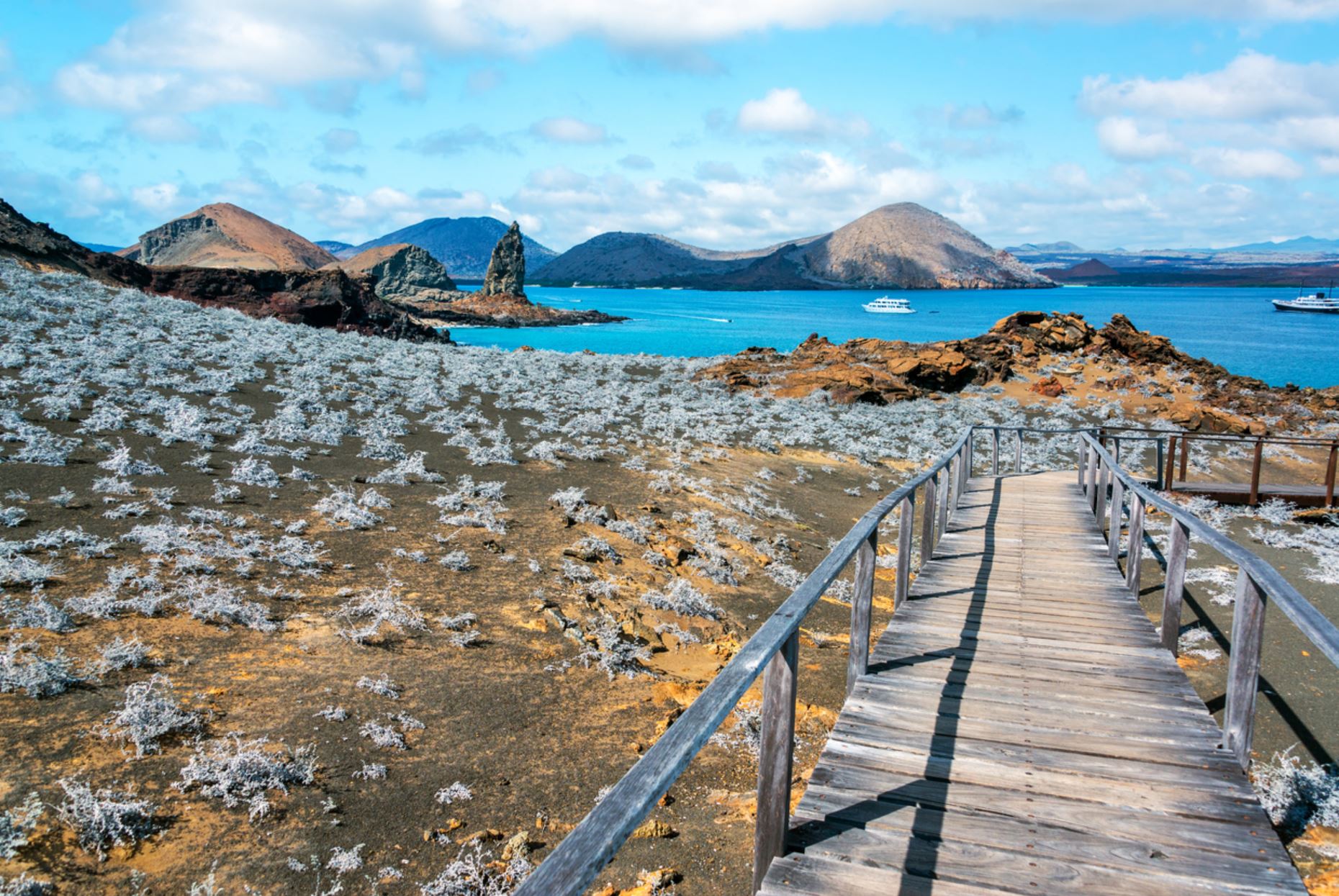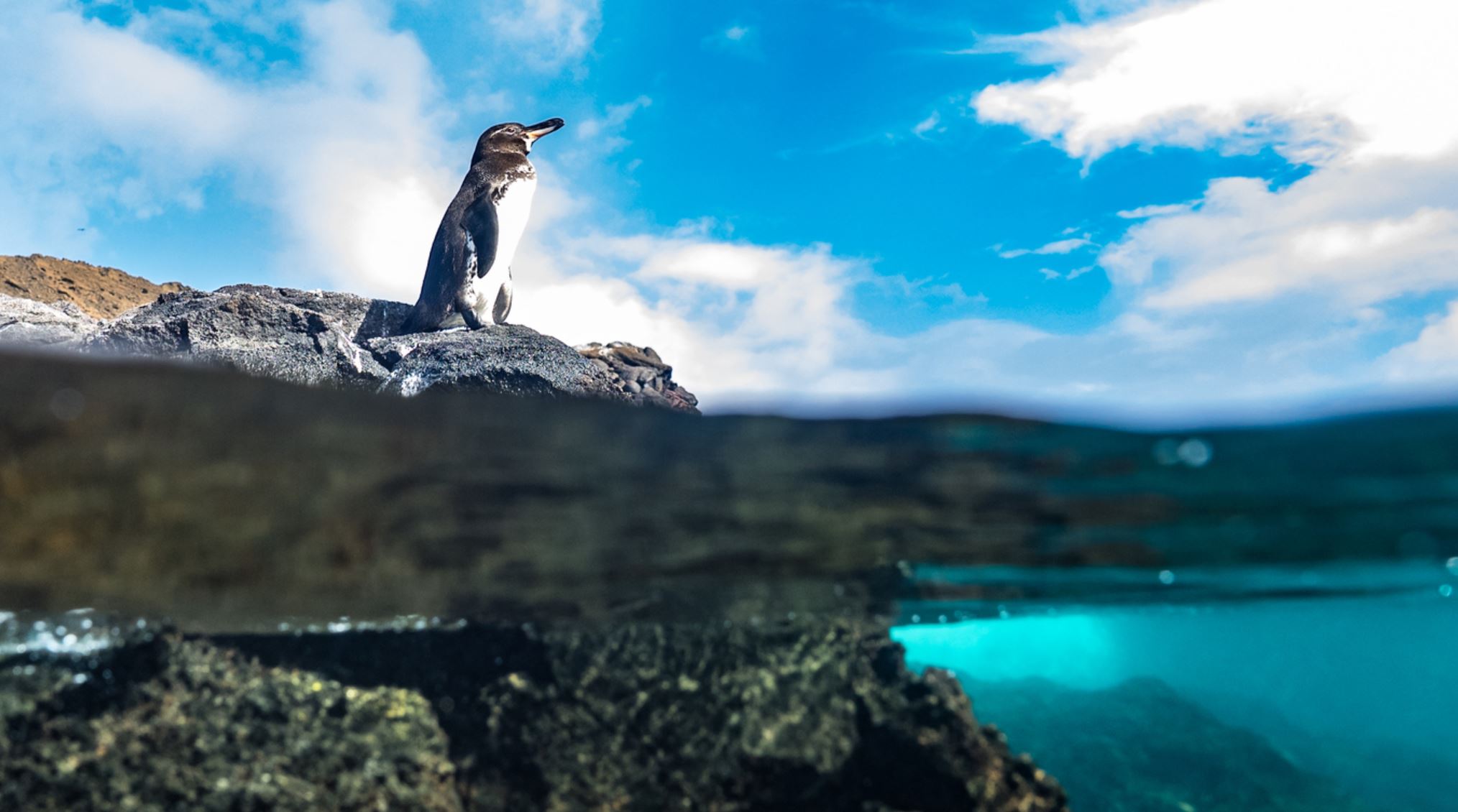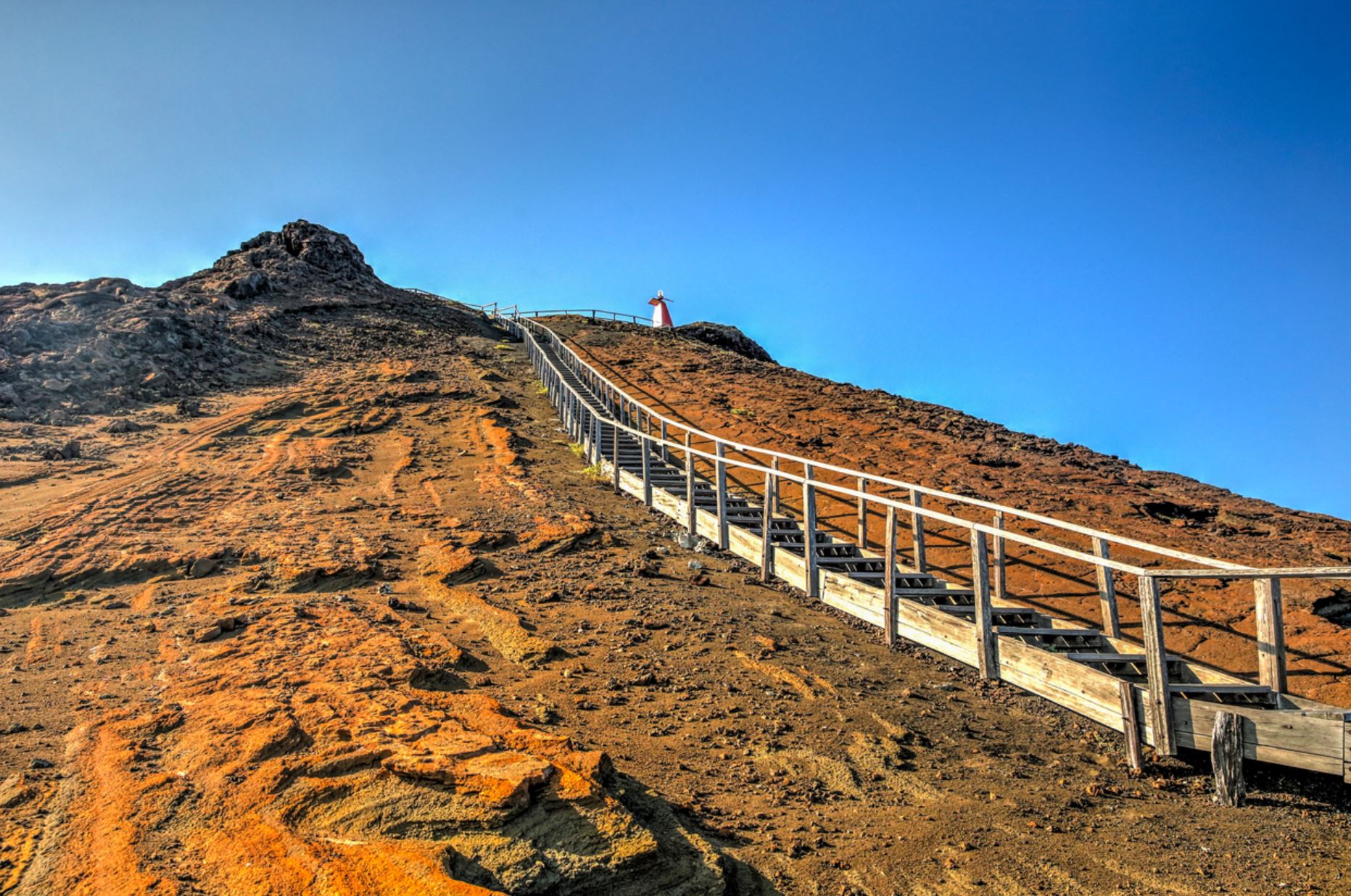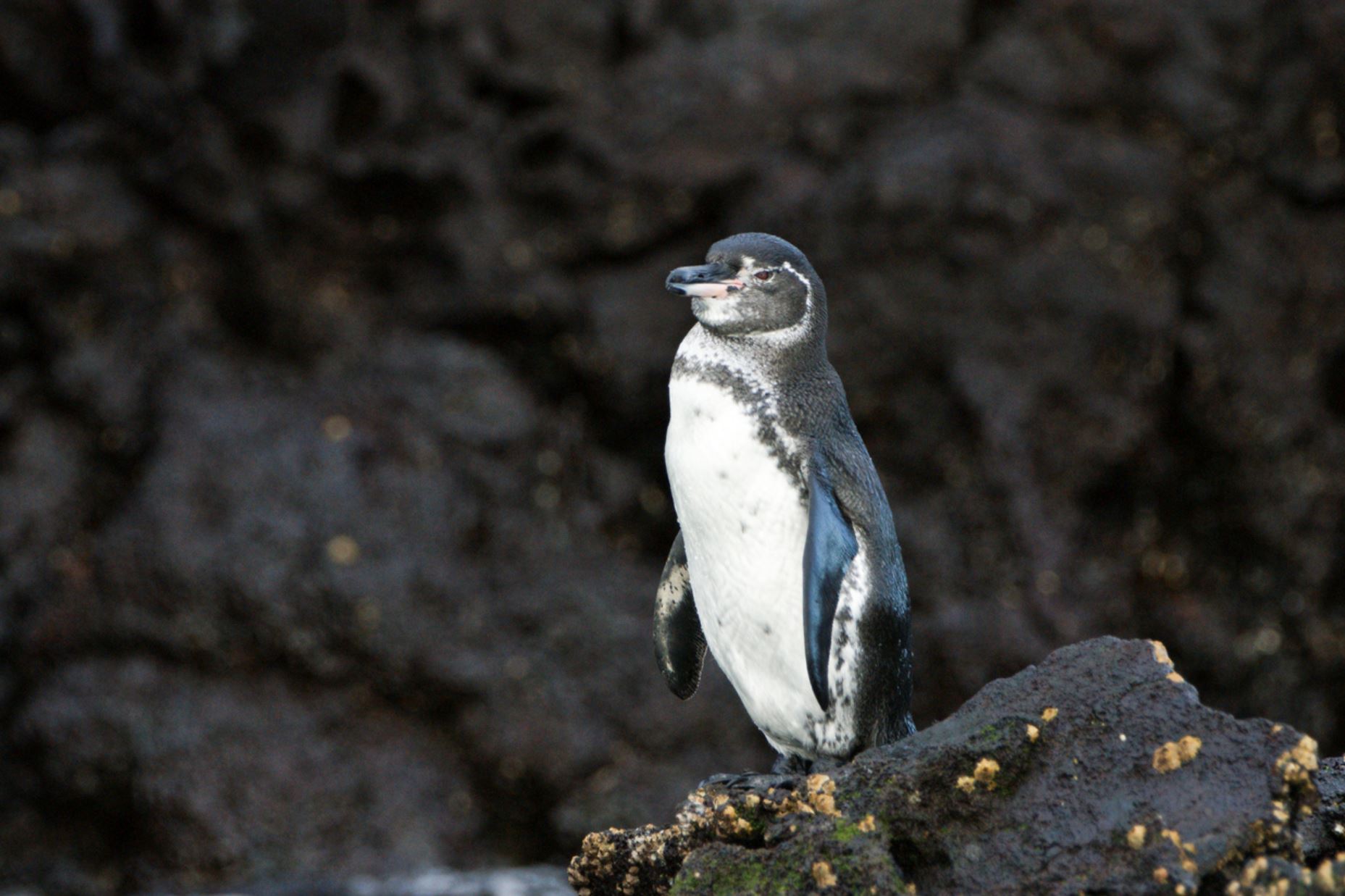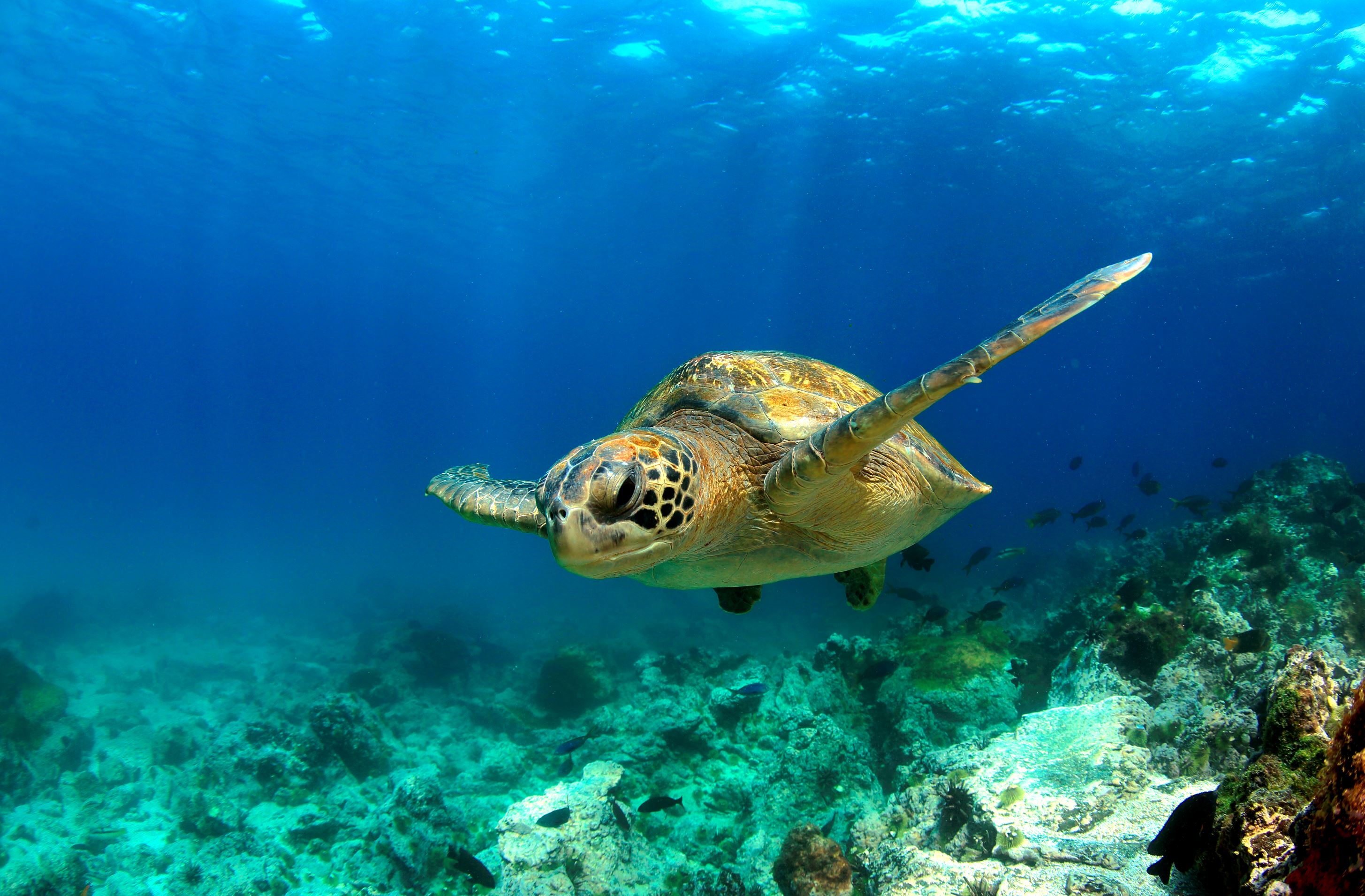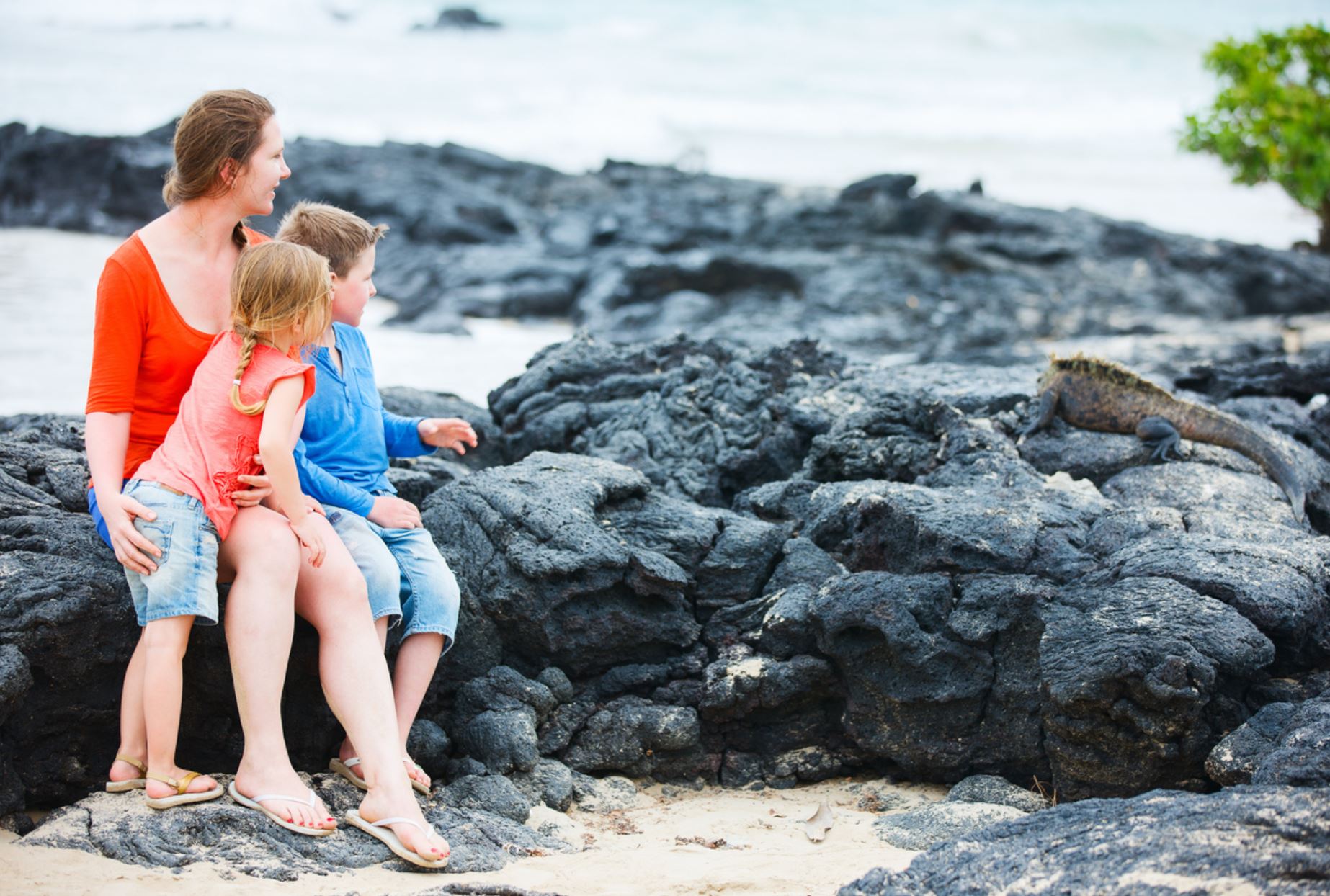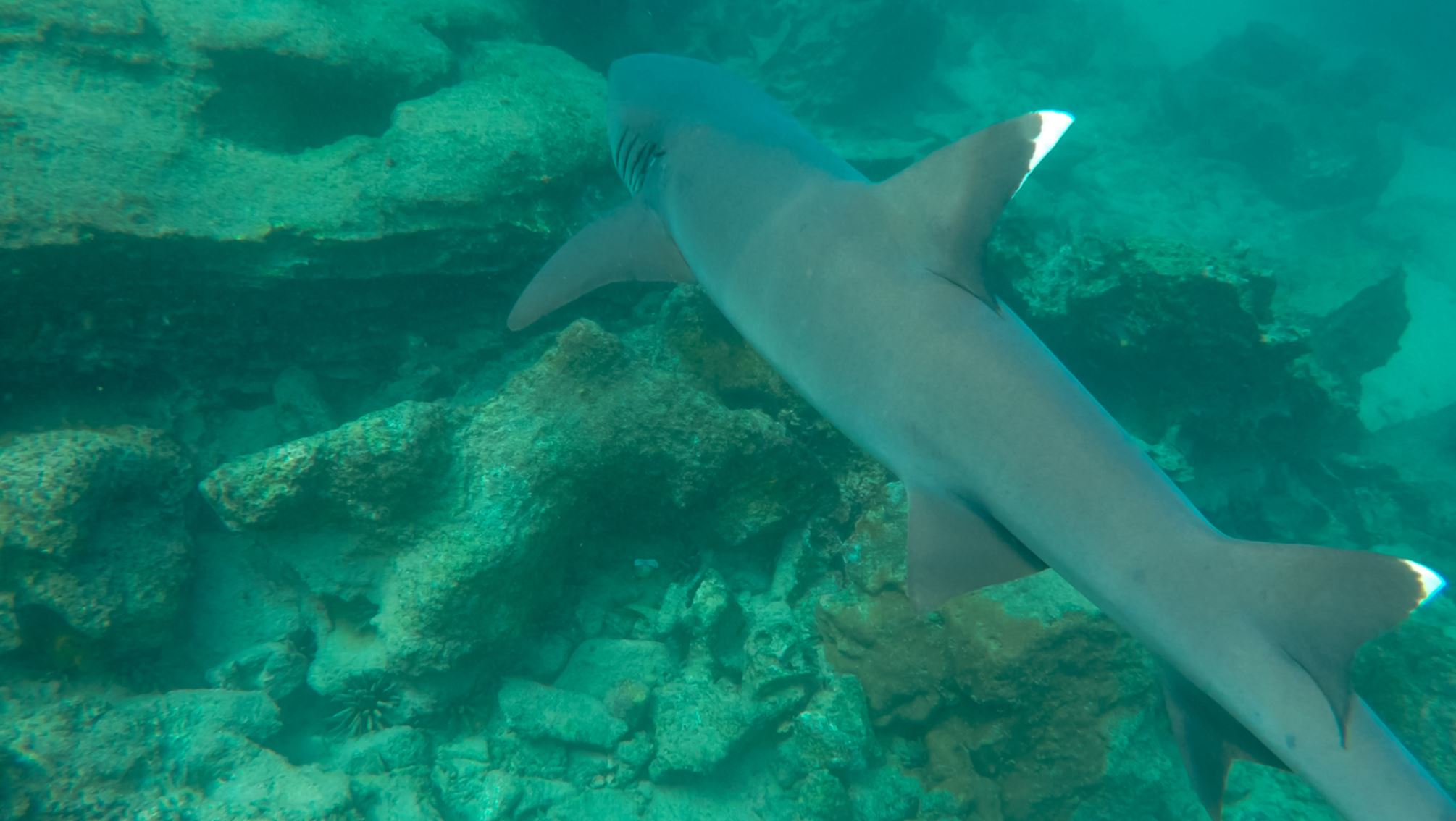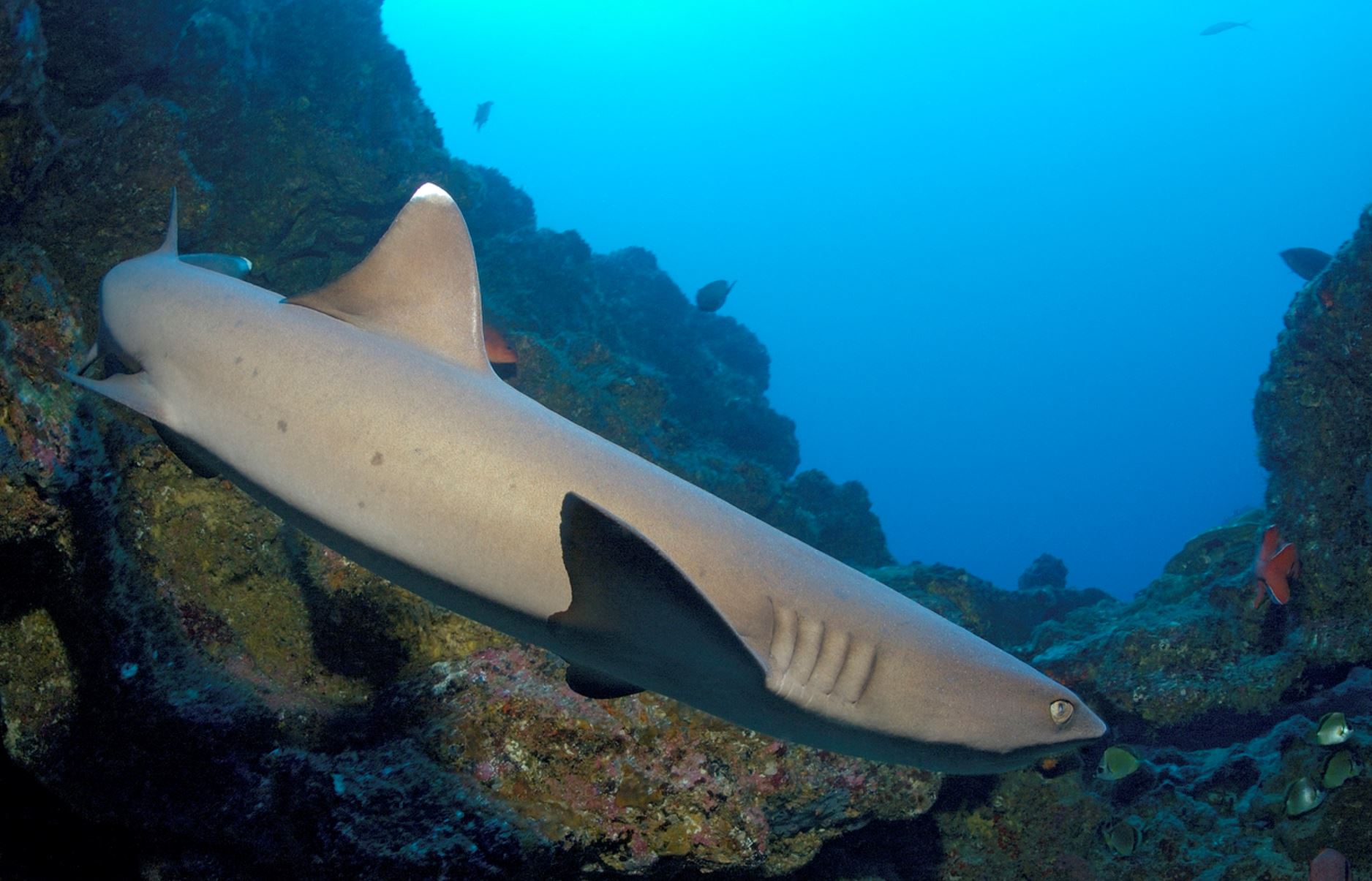Bartolomé
Animals/Wildlife




Landscape/Views




Snorkeling




Beaches




Bartolomé Island is one of the smaller and geologically younger in the Galápagos Islands. It is located slightly east of Santiago (also called San Salvador or James Island) and has a size of 1.2 km². It is named after Sir Bartholomew James Sulivan of the Royal Navy. The highest point on the island is 114 meters. Special attractions are the beaches, the Pinnacle Rock, , which can often be seen in photos of Galápagos, as well as Galápagos penguins and fish stocks.
Most important point of visit: 114 meter high hill with a fantastic view and a very beautiful beach with a view of Pinnacle Rock
Pictures
Highlights / Places to Visit
Climbing the hill in Bartolomé island
Animals that can be seen on the island
Galapagos Penguin
The smallest of the penguins and the only species of penguin that lives in the tropics, at the north of the Equator line. These birds are endemic to the Galapagos islands, found only on islands that are touched by the Cromwell and Humboldt currents which bring deep cold waters filled with mullets, anchovies, and sardines, basics for their diet. They are avid swimmers, they can reach 30 km per hour when swimming in search of food.
Their height is of about 49 cms (19.2 in) with a black back and a white chest. They also have pinks patches along the feet and the face that helps them keep them cool on hot days. Females tend to be smaller than males. They reproduce all year round and stay with their mate for life. Females lay between one to two eggs in a nest made on the ground, in the volcanic porosity. The egg hatches in about 35 days; sixty days later the chick leaves the nest and some months later starts to feed by itself.
It is estimated that there are about 2,000 of these birds living in the archipelago, most of their populations can be seen mainly in Fernandina and Isabela island. However, small colonies can also be found around other places in the archipelago such as Bartolome, Floreana, and Santiago on occasional sightings.
- Animal Group: Seabirds
- Scientific Name: Spheniscus mendiculus
- Animal Average Size: 49 cm
- Animal Average Weight: 2.5 kg
Fernandina, Isabela, Bartolomé, Baltra
Galapagos Green Turtle
Turtles are one of the most widespread species of marine turtle, found in tropical and subtropical waters throughout the globe. However, the Green Sea Turtle (Chelonia Mydas) is the only species of turtle that nests in the Galapagos Islands.Research has revealed that the nesting colony in the Galapagos is the largest in the East Pacific.
The Green Sea Turtle was so named because of the green colour of its body fat. The adult turtles algae diet is responsible for the colour in its tissues.
Green Sea Turtles body is wonderfully adapted to life in the ocean. Their shells are lighter and more streamlined than those of their terrestrial counterparts and their front and rear limbs have evolved into flippers making them efficient and graceful swimmers, capable of swimming long distances in a relatively short period of time. Green Sea Turtles have been known to move through the water as fast as 35 miles per hour. The Turtles sometimes emerge on to land to bask in the sun.
Green Sea Turtles are cold-bloodied. Adult green turtles are known to grow up to one and a half metres long. While individuals have been caught that reached weights of up to 315 kilograms (694 pounds), the average weight of mature individuals is around 200 kilograms (440 pounds). The largest Green Sea Turtle ever recorded weighed 395 kilograms (871 pounds).
The Green Sea Turtles shell is actually its skeleton. Unlike its cousin, the Tortoise, the Green Sea Turtle cannot retract its small head into its shell for protection from dangerous sea creatures.
Sea turtles have come up with an ingenious way to rid their bodies of the salts they accumulate from the seawater in which they live. Just behind each eye is a salt gland. Their salt glands help sea turtles to maintain a healthy water balance by shedding large ‘tears’ of excess salt. If a sea turtle appears to be ‘crying’ it is usually not cause for alarm, as the turtles are merely keeping their physiology in check. It is not because they are upset or sad.
Green Sea Turtles spend most of their life in the ocean. The males never leave the ocean, but the females come ashore to nest and lay eggs on several of the islands.
At night, the females dig pits on the sandy beach with their back flippers. They lay about 100 eggs and then they cover their pit. Green Sea Turtles leave the island and go back into the sea never returning to see their eggs. After the baby green sea turtles are about 6 months old, they start to eat algae and seaweed.
- Animal Group: Reptiles
- Scientific Name: Chelonia mydas
- Animal Average Size: 150 cm
- Animal Average Weight: 68 – 250 kg
Places where you may see this animal:
Santiago
Bartolomé
Santa Cruz
Santa Fé
Floreana
Galapagos Land Iguana
The land iguana species has its origin in a common ancestor with the marine iguana, about 10.5 million years ago. The iguana grows up to a length of 1.5m (5 ft.) and can weight 13kg (25pounds). They are herbivores, feeding mainly on the prickly-pear cactus but eventually would feed on insects and other invertebrates. They reach sexual maturity at around 10 years old and can live up to 60 years.
They lay 2 to 25 eggs, which they burry in sandy areas. These eggs hatch after around 100 days. In some islands, they have interbred with marine iguanas creating a hybrid iguana species. Very little has been discovered from this species but they are known to be almost all infertile and have a very reduced population.
There are two other species of land iguana in the archipelago, the Conolophus pallidus, which is found only on the island of Santa Fe, and the one known as the pink iguana only found in Wolf volcano on Isabella Island.
Same as other reptiles, they need to thermo regulate so they bask in the sun to warm up making a beautiful picture, and usually burry themselves in the night to conserve the heat in the cold season. They are usually found in the trails and around the cactus growing sites. They have developed symbiotic relationship with birds so they can easily be seen with a finch standing on their heads. Since they are very territorial animals, some fights and social dynamics are part of their natural display. There are about 8 thousand land iguanas in the archipelago.
- Animal Group: Reptiles
- Scientific Name: Conolophus subcristatus
- Animal Average Size: 100 - 150 cm
- Animal Average Weight: 11.5 kg
Places where you may see this animal:
Fernandina
Isabela
Bartolomé
North Seymour
Santa Cruz
South Plaza
Galapagos Marine Iguana
The marine iguana is the only marine species of lizard in the world; it has changed its behavior, diet and physiology through natural selection during thousands of years.
There are seven subspecies, most of them developed in different islands. They have black bodies that sometimes especially during mating season and in different times on distinct islands, can have some colorful patches with green, orange, grey and yellow tones.
Marine Iguanas are ectothermic animals, same as all reptiles. As a result, they need to thermo regulate their activities in order to survive, by behavior. They need to warm up with the sun to the ideal temperature of 35.5C to successfully perform an activity such as feeding, or to even move from one place to another. Their actions are dependent on the water temperature and climate, for example entering the ocean to feed they can lose up to 10C (mainly in the night).
Marine Iguanas must constantly warm up in daylight by lying flat, in order maximize how much heat they are receiving, also marine iguanas need to cool off when the sun is too strong by avoiding direct rays on their body. These animals are capable to even slow down their metabolism and heartbeat, in order to optimize their energy consumption. Typically, marine iguanas feed once a day, but depending on their size and needs they can do it every two or three days.
Sexual maturity is reached after 8 years and they can lay between one to four eggs, breeding season is usually in the months of November and December.
Marine Iguanas can be seen on the majority of the Galapagos shoreline as they feed on algae that grow in all intertidal zones of the archipelago. They are able to feed on almost all kinds of seaweed with the exception of the brown one ( it makes them sick). They prefer shallow water or exposed sea weed in order to feed without the necessity of diving, thus saving body temperature. However, it needs to be clear that marine iguana can dive as deep as twelve meters and hold their breath for about one hour if needed.
Their flattened tails help them to swim efficiently. These iguanas have developed a special gland to secrete the salt they ingest by feeding, such gland is located by the ear and is connected to the nose rich from where they expel a salty solution. Such salty solution is expelled by sneezing.
- Animal Group: Reptiles
- Scientific Name: amblyrhynchus cristatus
- Animal Average Size: 70cm
- Animal Average Weight: 13kg
Fernandina
Isabela
Santiago
Bartolomé
Santa Cruz
Santa Fé
Floreana
Española
Galapagos Racer Snake
Racer snakes on Galapagos are constrictors and only mildly venomous. They are known to prey on lava lizards, geckos, insects, iguanas, mice, rats and hatchlings of several bird species. They are not at all aggressive towards humans and could not do much harm if they were to attack after being threatened. Racers tend to be dark brown with stripes or spots.
There is some confusion over the number of species of racer snake found in Galapagos due to poor research. The latest research suggests that there are: the Galapagos racer (Pseudalsophis biserialis) from San Cristobal and Floreana – though it is locally extinct on Floreana and now only found on nearby islets; the Espanola racer (Pseudalsophis hoodensis) from Espanola and adjacent islets; Santa Cruz racer (Pseudalsophis dorsalis) from Santa Cruz, Baltra, Santa Fe and adjacent islets; Fernandina racer (Pseudalsophis occidentalis) from Fernandina, Isabela, and Tortuga; banded racer (Pseudalsophis slevini) from Pinzon; and the striped racer (, ) from Baltra and Santa Cruz.
It is the Fernandina racer which has been observed hunting for marine fish from rock pools and the shallows around Fernandina. The British biologist Dr. Godfrey Merlen was the first scientist to ever see this behaviour happening as he noted up to 15 individual snakes slithering around the lava rock pools around Cape Douglas. This is a unique behaviour of terrestrial snake not observed anywhere else in the world. The racers on Fernandina were also the stars of BBC´s Planet Earth II where they were filmed hunting juvenile marine iguanas.
Racer snakes can be found in Galapagos on most of the major islands, though they are now locally extinct on Floreana. The snakes are found throughout the year, but unlike many other Galapagos animals they are shy of humans and will hide away making them reasonably tough to spot without looking for them specifically. They are diurnal, most active around dawn and dusk, and often rest around midday. The native snake population has been decimated by introduced species such as cats, pigs and feral goats which forage for their eggs.
- Animal Group: snakes
- Scientific Name (depending from the islands): Pseudalsophis biserialis, Pseudalsophis hoodensis, Pseudalsophis dorsalis, Pseudalsophis occidentalis, Pseudalsophis slevini, Pseudalsophis steindachneri
- Animal Average Size: 80 cm bis 1,20 m
- Animal Average Weight: 8 – 10 kg
Racer males can be found in Galapagos on most of the major islands!
Galapagos Stingrays
Seen from the side, this animal is perfectly flat, with pectoral fins that extend to the head. The eyes are located at the sides of its head and with breathing cavities near. The diameter on average is from about 30 cm to less than 1 m. Stingrays are close relatives to sharks, with the common factor that both are cartilaginous fish that swim in warm waters of tropical oceans.
They will have one baby per year, and when the baby is born it will have to fend for itself. The females keep the egg and the juvenile in their uterus (ovoviviparous) from 2 to 4 months until the youngster is big enough to be born. No parental care is given to the newborn, it must be ready to feed and protect itself. Cartilaginous fish tend to mature at a slow rate, some studies say that they enter maturity when they are 20 to 30 years old.
Stingrays can spend most of their time buried on the seafloor and they have electrical receptors in their skin to help them read electrical charges in the ocean when looking for food and for orientation. Their favorite food is worms, fish, mollusks, crabs, and shrimp that they get by scooping through the ocean sand.
There are also other species in the ray family that can be spotted in the Galapagos: manta rays (the biggest of all, measuring about 4 m across its fins), golden rays, and spotted eagle rays.
- Animal Group: Marin Life
- Scientific Name: Dasyatidae
- Animal Average Size: 30 cm - 2 m
- Animal Average Weight: 7,6 kg
Places where you may see this animal in Galapagos:
Wolf, Darwin, Fernandina, Isabela, Genovesa, Santiago, Bartolomé, Rábida, Chinese Hat, Santa Fé, Santa Cruz, North Seymour Plaza Sur, Floreana, Española, San Cristobal
White tip Reef Shark
This species is recognized by its broad head and slender body, and it is one of the smallest sharks of its species. Its most outstanding feature is the white tip in the dorsal and tail fin. In length, it can reach up to 244 cm (96 in). Its habitat is around coral reefs of Asia, Africa, and Central America and can be easily spotted in shallow-warm waters as well as other places in the Pacific.
It mainly feeds on crustaceans such as crabs, lobsters, fish such as parrotfish, snappers, squirrelfish, and the occasional octopus and eel which they hunt in groups. It is a nocturnal hunter, when the prey is asleep and easier to catch. During the day, it remains in groups that spend most of the time resting motionless on the bottom of the ocean floor.
It will breed every other year, where the female will choose between as many as 5 males. Ten to thirteen months later, the female will give birth to around 6 pups. Youngsters will reach sexual maturity after 8 years and will grow slowly in length.
Whitetip reef sharks are fearless of humans and do not tend to be aggressive or territorial. When snorkeling they can become curious and approach swimmers; however, caution with wildlife is always advised.
- Animal Group: Marine Life
- Scientific Name: Triaenodon obesus
- Animal Average Size: 1.2 - 1.6 m
- Animal Average Weight: 18.3 kg
Location
Mr. Frobeen can give you precise information about the ships.
Mr. Frobeen will be happy to advise you by phone at +49 (0)7633 9399360 or via email info@frobeen.de
If you want to book, what are the payment methods?
The reservation is gratis as an option.
If you want to make an fixed booking, there is to pay a deposit of 20%.
The remaining payment is due 4 weeks before departure. In individual cases, such as diving cruises, other rules apply. Information on request.
- Your payments are insured against bankruptcy!



